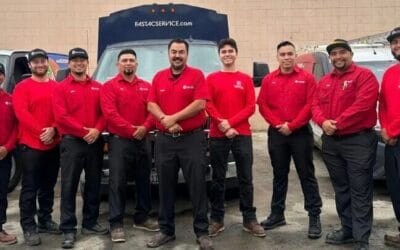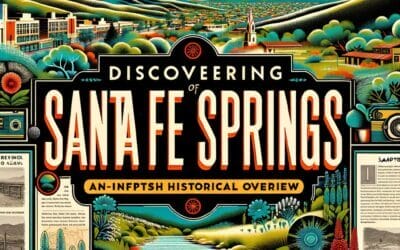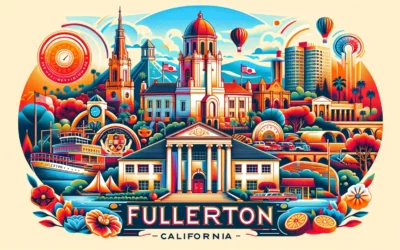Welcome to the enriching piece on “Monetery Park’s Legacy: An Expert’s Insight into its Rich History”. This informative post is specifically designed to let you explore the rich history of Monterey Park through the insights from an expert. With fact-based knowledge, the article not only educates you about the deep-rooted history of the park, but also allows you to understand its historical significance, illuminating its legacy across the generations. This comprehensive guide in easy and understandable language is assuredly helpful for anyone with an interest in historical research, travel enthusiasts, students, or even the curious minds who wish to delve into the intriguing past of Monterey Park. Let’s learn and enjoy the revelations our expert will share!
Unveiling the Tapestry of Monterey Park’s History
Welcome to the fascinating tapestry that is Monterey Park’s rich and layered history. In these intended sections, we’ll delve deep into the past and present of this city, unearthing elements that have shaped its unique persona and character. This piece is put together for those who seek to further their understanding of Monterey Park’s legacy, drawn from an expert’s insight. Get ready for a historical dive!
Let’s begin the journey by exploring the unforgettable chapters that marked the early days of Monterey Park. The city was initially inhabited by the Tongva Indians, known for their impressive rock art and advanced basket-weaving skills. It witnessed significant periods, each leaving its unique imprint:
- Spanish and Mexican rule (1771 – 1848): With the establishment of the San Gabriel Mission, the area experienced substantial agricultural development.
- American Era (1848 – Present): Post the Mexican-American War, the land was made part of the USA. This period observed developments like the arrival of the Southern Pacific Railroad, the rise of the citrus industry, and rapid population growth resulting in a diverse cultural landscape.
One cannot talk about Monterey Park’s history without mentioning its vibrant ethnographic composition. The city is renowned for its diverse cultural fabric, making it a fascinating study of human adaptation and interaction. Here’s a brief snapshot of Monterey Park’s dynamic demographic distribution:
| Period | Significant Influx Groups |
|---|---|
| Before 1960s | Primarily European American settlers |
| 1960s – 1980s | Significant wave of Asian immigrants, predominately from China and Taiwan |
| 1990s – Present | Increased Hispanic and multi-racial population |
Monterey Park’s historical panorama paints an enriching scene of continuities and transformations, offering an engaging tapestry that’s not only educational but deeply fascinating. Stay tuned as we keep unraveling more threads from this tapestry in the next sections.

Digging Deeper: A Closer Look into the City’s Cultural Evolution
Surrounded by Southern California’s lush landscapes, Monterey Park is a vibrant city rich in culture, strong community spirit, and a fascinating history. Initially inhabited by the Tongva Indians and later influenced by Spanish settlements, this city opens a compelling door into California’s past.
Today, the cultural vibrancy of Monterey Park is further highlighted by its wonderfully diverse population, showcasing the harmony of various cultures. It has become a bustling hub for Asian Americans, particularly Chinese. This diversity is apparent, especially in the city’s culinary scene. Phenomenal dishes like Xiao Long Bao (soup dumplings), Hainan Chicken, and Pho are just a few delicacies that can be found around Monterey Park. But this wasn’t always the case. The city had a rich history long before its emergence as an Asian-American cultural crossroads.
A peek into the city’s transition:
Brief Timeline:
| Year | Significant Event |
|---|---|
| 1800s | Home to Native Tongva Indians and Spanish colonization |
| 1900s | Agricultural boom due to ideal natural conditions |
| 1920s | Development of residential neighborhoods to accommodate growing population |
| 1960s | Shift towards industrial development |
| 1980s | Influx of Asian immigrants, significantly changing demographic composition |
Monterey Park’s cultural evolution was significantly shaped by a variety of influences, earlier from its Tongva roots and Spanish colonizers, followed by an influx of Asian immigrants. Today, the city stands tall as a true embodiment of America’s melting pot, continually writing new pages of its rich history, and retaining its legacy of diversity along a trajectory of prosperity.
Transcending Eras: Key Historical Milestones of Monterey Park
With its rich multicultural heritage, Monterey Park stands as an epicenter of diversity and growth while embodying a robust historical legacy. Spanning several eras, these historical milestones uniquely identify the city and tell its compelling story. This journey begins in prehistoric times, with the indigenous Tongva people who made their home in the San Gabriel Valley, including where modern-day Monterey Park now sits.
As we move forward in time, we encounter an era that marked a significant shift in Monterey Park’s narrative -the early 20th century. This period saw the incorporation of Monterey Park as a city in the year 1916 and the subsequent development of the ‘City Beautiful’ movement, which led to bolstering of community infrastructure and beautification projects. The city’s multi-faceted cultural story grew deeper with the mass immigration of Chinese-American families to the city in the 1970s.
- The establishment of the first suburban Chinatown inadvertently made Monterey Park a hub for Asian American culture in Southern California, with the area now famous for its cuisine, shops, and festivals.
- Carleton M. Winslow, an architect known for his work on the buildings of Monterrey Park during the ‘City Beautiful’ era, impacted the city significantly through his design aesthetic contributing to Monterey Park’s now preferred historical architectural status.
| Year | Historical Milestone |
|---|---|
| Prehistoric Times | Indigenous Tongva people settled in Modern-day Monterey Park |
| 1916 | Monterey Park incorporated as a city |
| Early 20th Century | Iniciof ‘City Beautiful’ movement |
| 1970s | Mass immigration of Chinese-American families, birth of first suburban Chinatown |
These milestones serve as testament to the dynamic and resilient spirit of Monterey Park. Its strength is reflected in its ability to integrate diverse cultures and histories while continuously moving towards growth and development. The city’s rich historical context offer insights into its past and act as a guide for the future.

Monterey Park’s Architectural Heritage: Threads of History Woven into Building Designs
Located at the heart of California, Monterey Park holds a rich collection of architectural designs and styles, testament to its colorful past. The city’s buildings speak of its multicultural heritage, an integral thread woven into its history, evident even in today’s modern structures.
In the early 1920s, Spanish Colonial Revival and Mission Revival style houses lined the picturesque streets. These designs incorporated elements from Spain’s architectural past with arches, white stucco walls, and red-tiled roofs. However, the 1930s introduced a drastic shift towards the stately and imposing English Tudor style, characterized by its steeply pitched, multi-gabled roofs and decorative half-timbering. Let’s explore some key examples:
- The Monterey Park City Hall, a splendid example of Mission Revival style, features the traditional arched entrances and prominent bell tower.
- Header House, a hallmark of English Tudor style, displays unique exterior features such as herringbone brickwork and ornate widow tracery.
However, one can also find traces of other architectural influences in Monterey Park, such as the minimalist yet innovative Mid-Century Modern style or the distinctive Asian architecture. The Mid-Century Modern style, marked by its clean lines and integration with nature, can be seen in the Jardin El Encanto building. On the other hand, Asian architecture, specifically Chinese, is present in the various shopping centers, contributing to the city’s unique charm and character.
| Architectural Style | Key Features |
|---|---|
| Spanish Colonial Revival | Red-tiled roofs, stucco walls, arches |
| English Tudor | Steeply pitched roofs, decorative half-timbering |
| Mid-Century Modern | Clean lines, integration with nature |
| Asian Architecture | Element of harmony, symmetrical structures |
When exploring Monterey Park, one can’t help but admire the architectural legacy it carries. Indeed, each structure adds a unique strand to the city’s rich tapestry, revealing not only its history but also its cultural diversity and evolution.
Reflections from the Past: The Influential Figures of Monterey Park
Once an agricultural locale known for its vineyards and orchards, Monterey Park transformed into the vibrant multicultural community that we now cherish. This impressive metamorphosis owes much to a few visionary figures, who played pivotal roles in shaping the city’s rich tapestry of diverse heritages.
- Laura Scudder – Known as the “Peanut Butter Queen,” Scudder forever revolutionized snack food by producing the first-ever sealed bags of potato chips in the 1920s. She was also Monterey Park’s first female attorney and a staunch community advocate.
- Frederick P. Olmstead Jr. – A prominent landscape architect, Olmstead designed the city plan with an emphasis on expansive green spaces, fostering the city’s picturesque suburban appeal.
- Soong Mei-ling – While not a resident of Monterey Park, Soong, the former first lady of the Republic of China, hugely promoted Chinese culture in the area in the 1970s, attracting Chinese immigrants and resulting in the vibrant Chinese American community this city fosters today.
Let’s take a closer look at the tangible impacts of these pioneering figures on Monterey Park’s development and character. We can examine this through their major contributions.
| Figure | Major Contribution |
|---|---|
| Laura Scudder | Boosted the local economy through her snack food industry. Gave legal aid and support to the community. Her former home is now a local historical site. |
| Frederick P. Olmstead Jr. | Designed the city’s layout to include extensive green spaces. His vision can be enjoyed today in the city’s beautiful parks and recreational areas. |
| Soong Mei-ling | Greatly increased Chinese cultural appreciation in Monterey Park through her visits and influence, leading to the establishment of a thriving Chinese American community. |
Preserving Monterey Park’s Legacy: Guidelines for Future Generations
Monterey Park holds an overflowing wealth of history, culture, and hospitality that each resident takes pride in and wants to preserve for upcoming generations. From the stirring tales of the early settlers and scenic landmarks, to the rich and vibrant fusion of cultures, this southern California city offers a unique blend of historic preservation and modern living. Understanding the past and embracing it as a major part of the community identity is crucial in passing this legacy on to the future leaders of Monterey Park.
Preserving this legacy involves an understanding and appreciation of its unique characteristics. These include:
- The cultural melting pot: As one of the first suburban Chinatowns of Los Angeles, Monterey Park is a beautiful amalgamation of diverse cultures, bringing together a variety of food, art, and festivals.
- Historic architecture: Structures like the Garvey Ranch Observatory and the Garvey Ranch Park lend a unique charm to the city, enriching its heritage and connecting it to its past.
- Community engagement: Local events like the Lunar New Year Festival and the Cherry Blossom Festival foster community spirit, pride, and unity.
A Peek Into Monterey Park’s Rich Timeline
| Date | Milestone |
|---|---|
| 1800s | Home to Native American villages and Spanish ranchos. |
| 1920s | Known as “The Valley Beautiful” for its scenic landscapes and rich agriculture. |
| 1970s | Transformed into one of the first suburban Chinatowns of Los Angeles. |
| Present | A diverse cultural hub, known for its unique blend of history and modernity. |
Preserving Monterey Park’s legacy is undoubtedly a collective responsibility of the residents and leaders alike, and with purposeful actions, the historical essence of Monterey Park can remain an integral part of its community identity for generations to come.
Key Takeaways
In conclusion, we’ve walked through various chapters of Monterey Park’s vibrant past, from its early roots to its remarkable metamorphosis into a cultural crossroad. As an expert in the area’s history, it’s been a genuine privilege to provide you with an authentic account of this dynamic community’s journey, weaving together the many threads that have contributed to the city’s fabric. The spirit of Monterey Park’s legacy continues to live on in its vibrant streets, diverse neighborhoods, and vibrant people. It’s a testament to the importance of preservation, cultural exchange, and the transformative power of community. Thank you for joining in this exploration; hopefully, your understanding of Monterey Park’s rich narrative has broadened and deepened. Keep exploring, keep learning, for every city has a story waiting to be discovered. Until our next historical adventure!



